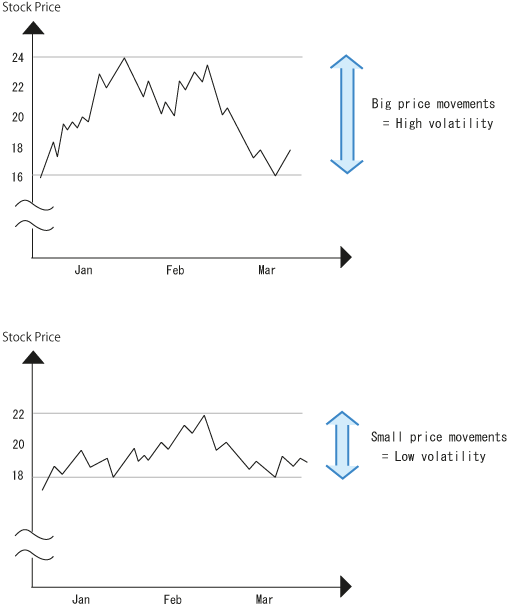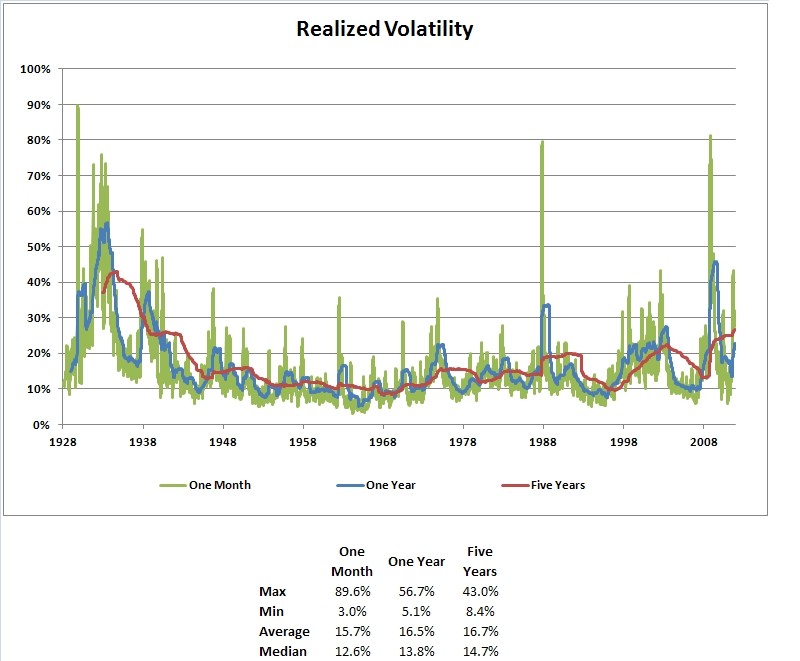What is Volatility
Post on: 16 Март, 2015 No Comment

As we continue to define finance terms, we come to a term that is tossed around a lot lately: volatility. Generally, when something is volatile, it means that it is unstable and could at any moment take off in one direction or another.
The measure of volatility in finance is similar: it measures how much a stock is expected to vary over a period of time. But it is also a little more complex than that, so let’s look at everything that is involved.
Specifics about Finance Volatility
As we established, finance volatility measures the stock’s expected variance (as predicted by historical trends), and this can be measured as a percentage or dollar amount from the mean. The complex part comes about in the many different ways volatility can be measured and in the calculation.
Now the actual calculation for volatility is complex, including all kinds of square roots (and advanced math that I have long forgotten!), so we won’t discuss the measurement in detail. However, one basic term should be covered to better understand volatility: beta.
Beta
One common way to measure volatility is to compare it to a stock market index. like the S&P 500. The index that the stock is being measured against is called the beta. When this beta (in our example, the S&P 500) moves, the stock’s comparative move is measured against the beta to give the volatility as a percentage or an absolute number.
These numbers can be broken down to groups of stable or volatile. Stable stocks will vary little from the beta, and volatile stocks will reflect a volatility of at least twice the value of the beta.
For example, let’s look at one of my favorite stocks, General Mills: it has a beta value of 1.08% against the S&P 500. This means that for every 100% move the S&P 500 made, General Mills moved 108%. These figures mean great things for the volatility of General Mills; the stock is relatively stable. On the other hand, a volatile stock would measure closer to 2% (or higher).

Using the Information
So now that we’ve defined volatility, how can we use it to our advantage? Typically, the more volatile the stock, the more dangerous the investment. If a stock swings in huge variances on any given day, you can never really predict what direction it is going.
Stocks with low volatility, on the other hand, will be more predictable. For long term stocks, lower volatility is generally favored. These stocks are sure and steady; they will be much more likely to win the race. It will just take a little longer to get there.
That being said, if you wish to make money quickly, high volatility stocks are one of the only ways to go. The huge fluctuations allow you more chances to buy low and sell high. But the volatility also leaves you with an unstable stock that may not return to a selling point. We here at MomVesting would like to caution: it is better to buy healthy stocks for the long haul than to aim for quick money.
Volatility is a very important term with which you should become familiar. It allows investors to better identify stable stocks. However, it is only a small part of the stock’s overall health, so be sure to consider all other parts of the stock and the business before purchasing.














